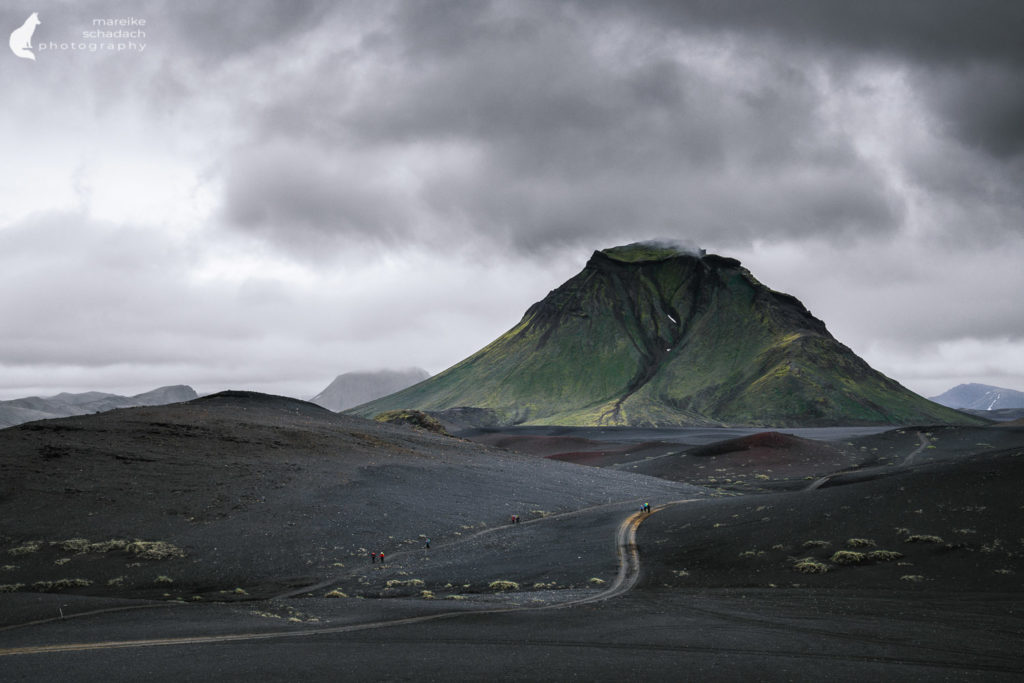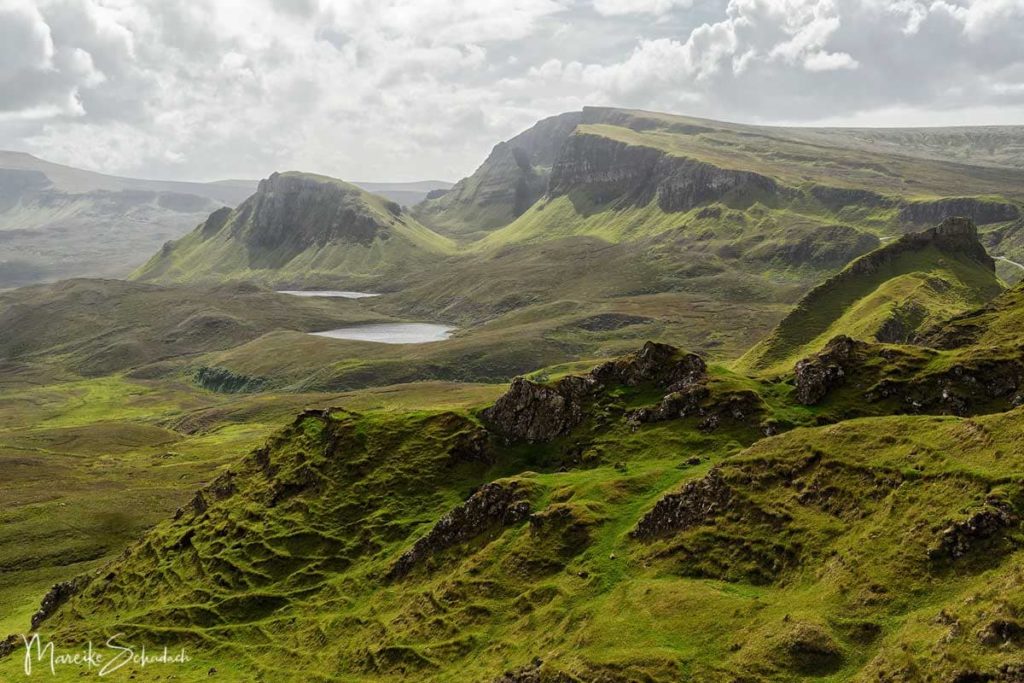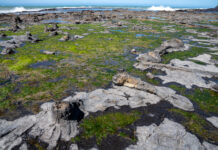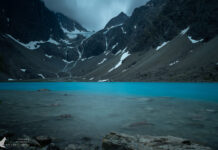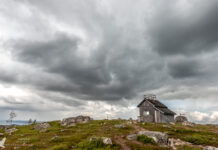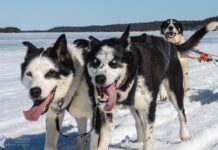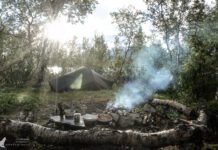
After weeks of planning and preparation, the time has come: the trekking tour is just around the corner, and suddenly... you're ill. A cold or other infection can quickly put you out of action for days. Fever, diarrhea, dizziness, or simply a lack of energy and strength can thwart your meticulously prepared plans without mercy. And now what? To help you stay healthy on your trekking tour, I have put together my best tips for you in the following article.
Trekking tours take us into nature, far away from pharmacies, and often to climatically challenging regions. To ensure that the tour remains an unforgettable experience and is not marred by health problems, good preparation is essential. In addition to the right equipment, including a first-aid kit, nutrition, hygiene, and generally prudent behavior play a key role. If you also have a few basics about tried and tested home remedies to hand, you can act quickly if necessary. This is what it's all about:
- Staying healthy while trekking: the right Preparation
- Staying healthy on the Trail: Behavior when hiking and in Huts
- First Measures on the Trail

A Word in Advance
I wrote this article following my one-year sabbatical from my job. During this time, I worked on a husky farm in Finland, went hiking and trekking in Scandinavia and New Zealand, went diving and paddling in Indonesia, and embarked on a Japanese food adventure in Japan. I spent a lot of time in adverse weather and extreme climates and gained a lot of experience over the year on how to stay healthy while traveling and how not to do it.
Disclaimer: I am not a doctor or anything like that. But I am sure that my tips for staying healthy on a trekking tour will be useful to you at some point. However, you have to check and decide for yourself whether the following tips are suitable for you and your body in the respective situation. Enjoy reading and stay healthy!
Unassigned, unpaid advertising. The article contains affiliate links.
“Leisure Sickness” - Why do you get sick at the Start of your Vacation?
A topic that I'm sure all of you are familiar with: the vacation begins and on the first day of your vacation you catch a cold right on time. How unfair the world can be, because after all, you've earned your vacation after all that stress at work...
There is a name for this: “Leisure Sickness”
Langanhaltender Stress schwächt das Immunsystem, da der Körper vermehrt Stresshormone wie Cortisol produziert, welche die Immunabwehr unterdrücken. In der Erholungsphase, wenn der Stress wegfällt, kann der Körper die Produktion von Abwehrzellen herunterfahren, Krankheitserreger haben nun leichtes Spiel.
What helps? I pay particular attention to my diet during the work/holiday transition period and try to reduce my exposure (e.g., wearing a mask on public transport, working from home...). If possible, I try to reduce my stress levels before I go on vacation. If that's not possible, I try to deliberately keep the stress level high at the start of the vacation...;-)
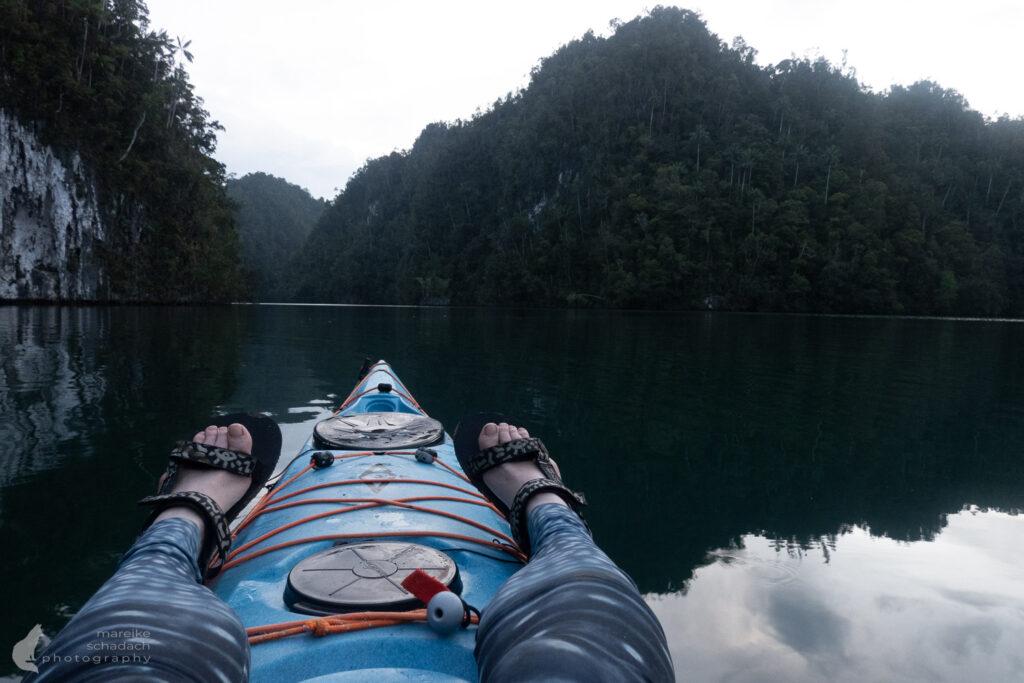
Staying healthy while trekking: the right Preparation
Preparation for a trekking tour usually consists of route planning, putting together your equipment and provisions, and, if necessary, training specific skills such as navigation and orientation, paddling techniques, or climbing knots. To stay healthy before and during your trekking tour, the following points should also be part of your preparation:
Fitness and Training
The best basis for a healthy trekking tour is solid preparation. This includes a realistic assessment of your own physical fitness. Trekking often requires hours of hiking with luggage, sometimes at high altitudes or in rough terrain. Targeted endurance and strength training a few weeks to several months before the tour helps to prepare the body. The more ambitious the tour, the earlier you should start training.
TIP: Get out into the fresh air! Especially if you are out and about in winter, it helps to get used to the cold ambient air. Stimulate your circulation with cold showers or alternating showers.
Make sure your training is similar to the physical activity of the planned tour. For example, before my trekking tours, I walked up and down a small hill in the city park with a fully loaded rucksack, went jogging, and practiced with various training videos.
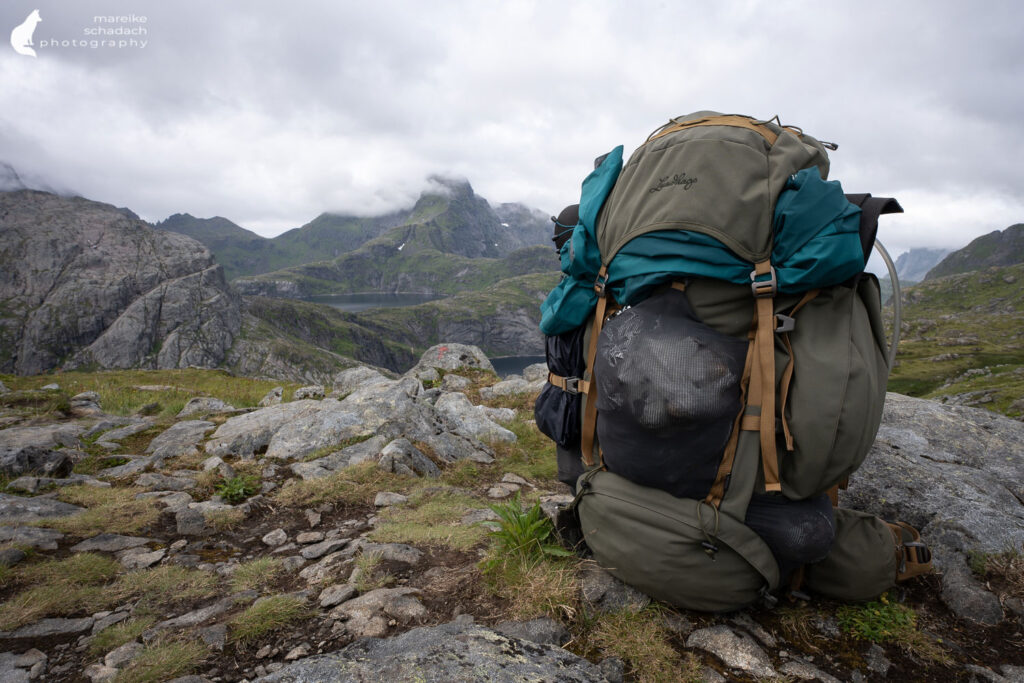
Check up at the (Dental) Doctor
Who has ever had a toothache on the road? Who has even had to see a dentist on the road? I know someone who had to pull a tooth himself on his tour in the Swedish fells. That was certainly no fun. Ever since I heard this story, I always go to the dentist for a check-up before I travel, preferably with an all-round x-ray.
If you are going on tour in remote areas or are planning a strenuous undertaking, you should also visit your family doctor for a check-up. When was your last ECG? Are you going to the mountains at high altitudes? Then, you should seek advice from an altitude doctor beforehand.
Equipment
Your equipment also has a direct influence on your health when trekking. Well-worn hiking boots, possibly with insoles, prevent blisters and joint problems, while functional clothing protects you from wind, cold, moisture, mosquitoes, and strong sunlight. Research what kind of weather you can expect and adapt your equipment accordingly. Look after your equipment. Your rucksack must also fit, be packed, and adjusted properly so that the trekking tour does not become a burden.
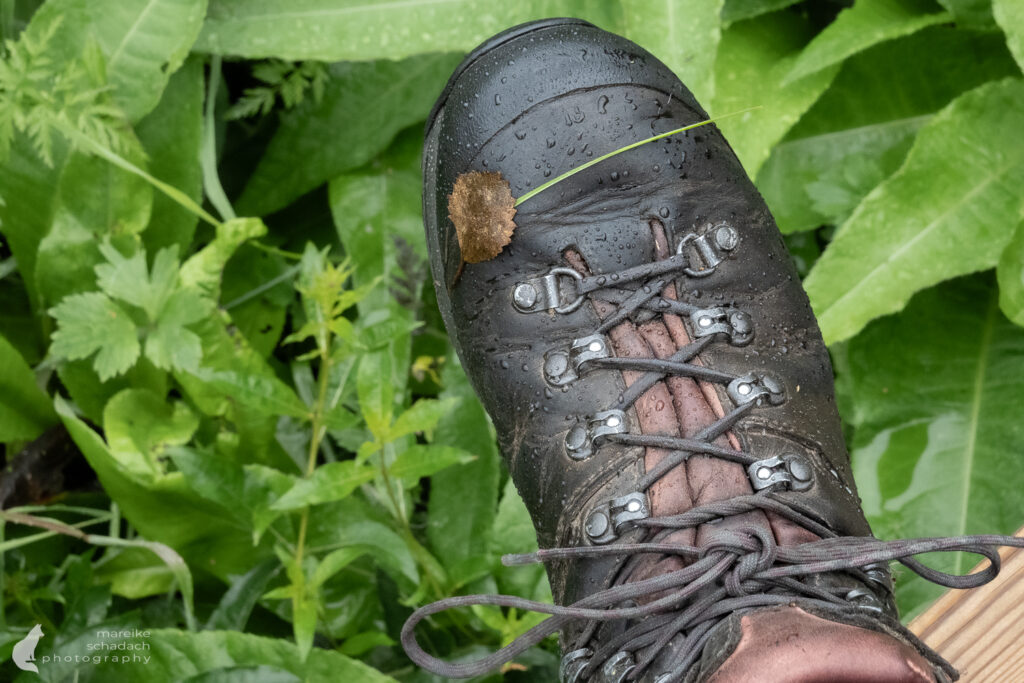
Travel Medicine Kit
In addition to a first-aid kit with bandages and disinfectant, a first-aid kit should also be in your luggage. In addition to personal medication (e.g. for allergies), this should also contain painkillers and antipyretics, ointment for wounds and ailments, cold medicine (nasal spray), vitamin C+ zinc tablets, as well as remedies for gastrointestinal complaints, and, if necessary, a broad-spectrum antibiotic. I also like to take something for gingivitis, cold sores, and soothing eye drops, as my eyes get irritated quickly by the wind.
How you equip your first-aid kit depends, among other things, on your planned tour and activity, your personal health conditions, the general medical care in the destination country, the remoteness of the area, and other regional particularities. The following should be considered:
- How far away is the nearest pharmacy
- How over-the-counter are the medicines? Are doctor's prescriptions necessary? In Sweden, for example, I couldn't get an Aspirin Complex or similar cold remedy without a prescription, whereas in New Zealand you have a good selection even in the smallest store.
- Are imported medicines legal in the destination country? Up to what quantities?
- Do I need a doctor's certificate for prescription medicines to avoid any questions or problems at customs? What do I have to declare when entering the country?
- How do I store the medication en route so that it does not spoil?
ALSO HELPFUL ON A HOLIDAY: earplugs against snoring fellow hikers or noisy rivers; compression stockings if traveling by air; medication against motion sickness/seasickness.
Insect Repellent
Mosquitoes are the most dangerous animals in the world, as they carry a large number of human pathogens. These include malaria, yellow fever, Zika fever, and dengue fever. Tropical mosquito species such as the Asian tiger mosquito, which can also transmit dangerous diseases, are also spreading in Germany. Anyone who is also sensitive to bites (swelling of the bites) or even allergic has even more reasons to protect themselves from insects:
- Insect spray, itch-relieving ointment
- head net
- Mosquito net over the bed/in the tent
- Impregnated clothing
- Choice of destination / season
- Medicine for allergy sufferers
- Mosquito repellent to eat? Yes, there really is such a thing. Garlic, lemons, and ginger contain substances that make you unattractive to mosquitoes.
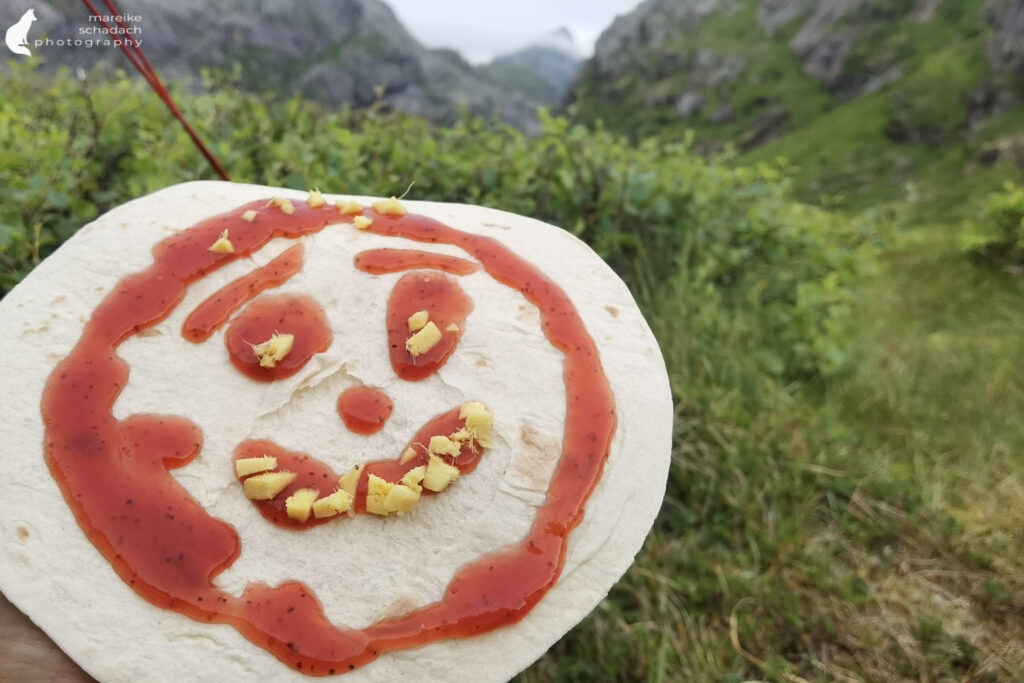
In addition to mosquitoes and wasps, special attention should be paid to ticks, as they can transmit Lyme disease and TBE viruses:
- Better visible on light-colored clothing
- Tuck your trouser legs into your socks
- Brush off clothing before getting into the tent
- Use insect repellent
- Check your body for ticks every(!) evening: After a bite, it takes up to 1 to 2 days for borrelia to be transmitted. TBE viruses, on the other hand, are transmitted within a short time after the bite. Removing ticks in good time reduces the risk of infection with Borrelia bacteria.
- Have a tick card with you and be able to use it
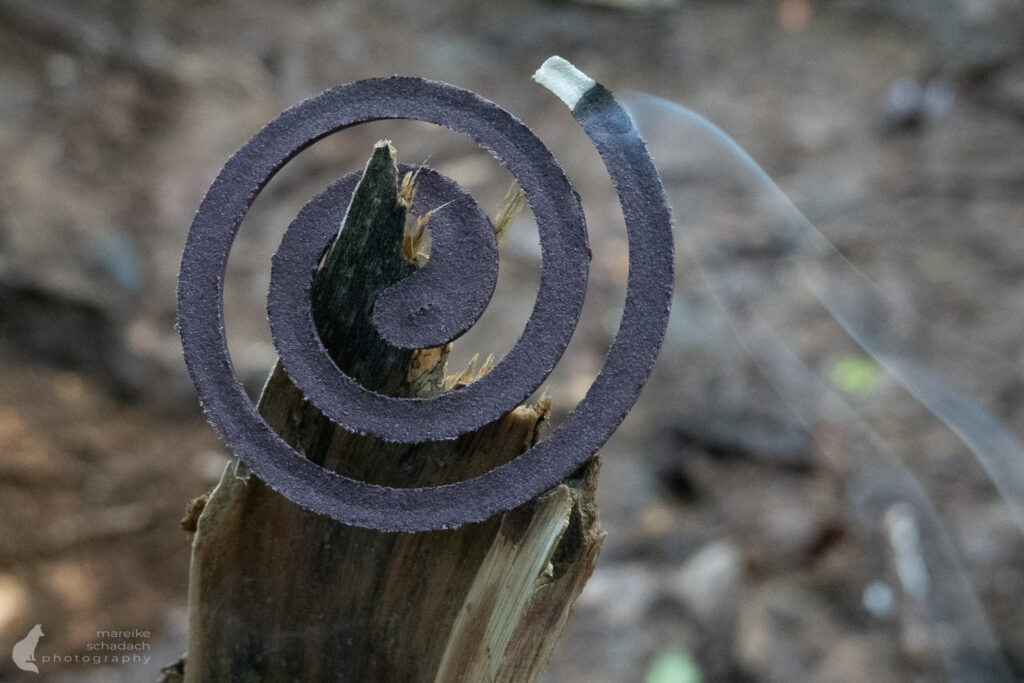
Vaccinations and Malaria
You can find out about recommended vaccinations in the travel and safety information from the Federal Foreign Office or on the website of the Robert Koch Institute. Is there malaria in the destination country and what is the recommendation (prophylaxis or tablets for emergencies)? Bear in mind that malaria tablets taken as a prophylaxis can also have side effects (e.g. tiredness, diarrhea). Ask your doctor for advice on which medication is best suited to your type of travel. You may also want to take a digital clinical thermometer with you.
TIP: Vaccinations, especially those with live vaccines, can have side effects that put you out of action for a few days. Sometimes the side effects only appear up to a week after vaccination, as is the case with dengue fever, for example. So plan your vaccinations well in advance of your trip. I had my dengue fever vaccination one day before departure and got a fever exactly one week later. Good thing I had canceled my trekking tour into the mountains due to bad weather.
Food
Another important point is nutrition. A trekking tour consumes a lot of energy, so you should plan for high-calorie but easily digestible and long-lasting food. Keeping food cool en route by wrapping it in wet cloths helps to keep it fresh and digestible. Muesli bars, nuts, and dried fruit are ideal companions.
My provisions always include
- Chamomile or sage tea for inhalation
- Fresh ginger and garlic
- Honey, preferably Manuka honey
Do you eat a vegan diet? Then find out whether you can get protein-rich plant-based foods locally or take some bars with you. You know better than anyone that simply cutting out meat, fish, and dairy products won't work. Your hosts or the corner store at the camp may not know this. That's what happened to me in the Andes in Ecuador, where I quickly realized that I wouldn't get very far with my vegan diet and lack of alternatives to meat.

Drinking Water
Zudem muss die Wasserversorgung sichergestellt werden. Je nach Region muss das Trinkwasser aus Oberflächengewässern aufbereitet werden. Das kann durch Abkochen, durch Wasserfilter oder Wasseraufbereitungstabletten passieren.
Wasser aus dem Oberlauf von fließenden Gewässern ist in der Regel von besserer Qualität als Wasser im Unterlauf von Flüssen oder von stehenden Gewässern. Achtet auf Viehzucht, Weidehaltung oder Camps in der Umgebung und entnehmt euer Wasser im Wasserlauf oberhalb etwaiger Verschmutzungsquellen.
Is your water supply based on melted snow or ice? Remember to add electrolytes.
In many countries, drinking tap water or even brushing your teeth with tap water is not recommended. Also be careful with ice cubes or fruit juices, which often have water added. Find out beforehand what the situation is in your destination country.
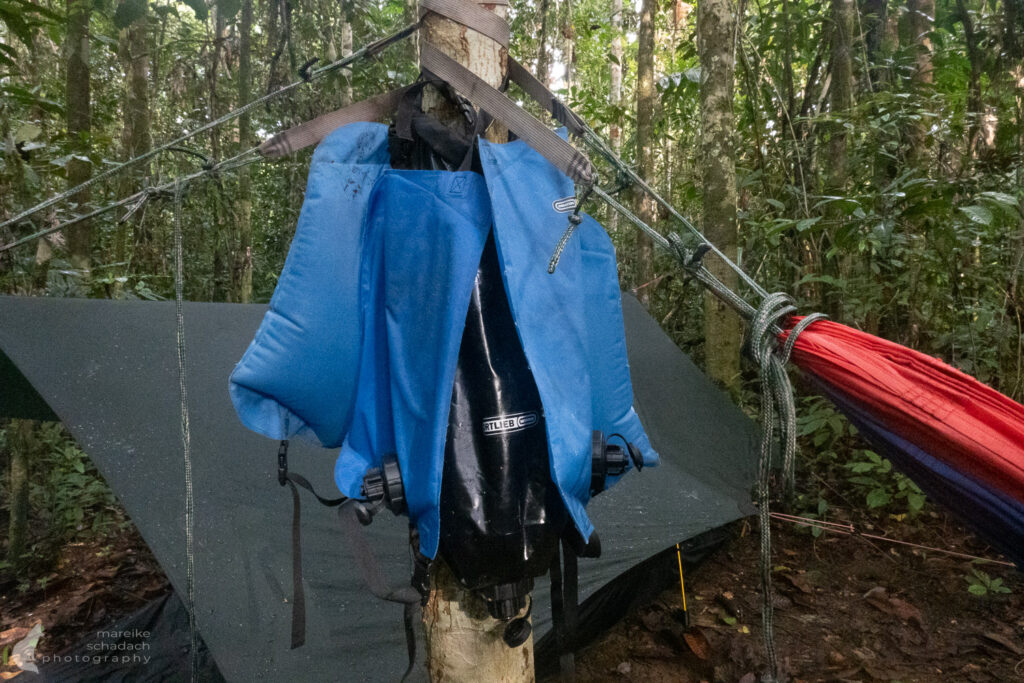
Don't forget Travel Health Insurance
No matter how well prepared and careful you are, something can always happen on the road. To avoid being stuck with expensive medical bills, you should take out travel health insurance. Good travel health insurance also covers repatriation home if you are unable to continue your trip for health reasons.
Be careful: Depending on your planned plans, supplementary accident insurance may be advisable. Check whether your health or accident insurance also covers “search and rescue”. Often very little money is provided for this.
Outdoor First Aid and Wilderness First Aid
You should also brush up on your first-aid skills before every tour! Can you apply a pressure bandage yourself? Or build a makeshift forearm splint? Practice makes perfect.

The best first aid lessons for your trekking tours or winter / solo tours are provided in the Outdoor First Aid Basics and Wilderness First Aid courses from the Guide Academy-Europe. This training quickly gives you the basic confidence to act and enables you to take first aid aspects into account when planning camps and tours or, if the worst comes to the worst, to help yourself until help arrives.
Staying healthy on the Trail: Behavior when hiking and in Huts
How to act while Hiking
During the trekking tour, your behavior naturally plays a decisive role for your health. The right pace is important: overexertion not only leads to exhaustion but also weakens the immune system. Regular breaks help to regenerate the body. In high temperatures, it is essential to drink enough and use sun protection (sun cream and headgear), while in cold regions, care must be taken to keep warm and dry. Avoid getting too warm and sweating. Throw something warm on during breaks, or change your sweaty shirt for a dry one.
Tip: Your feet also need air. However, this is often only possible to a limited extent in modern GoreTex shoes. Feet sweat and are then more susceptible to blisters. So let your socks air dry or change them. Allow the shoes to air by removing the insoles.
Hygiene and Washing on Tour
It's easy to work up a sweat carrying your rucksack up the mountains. Even if it is not always easy on the way, freshen up at least a daily cat wash of the most important areas: Faces, hands, armpits, between the legs, and feet. Wet wipes are practical for on-the-go. Also, wash your clothes.
Also, read my separate blog article “A full bath in the stream? Washing on a trekking tour - here's how”.
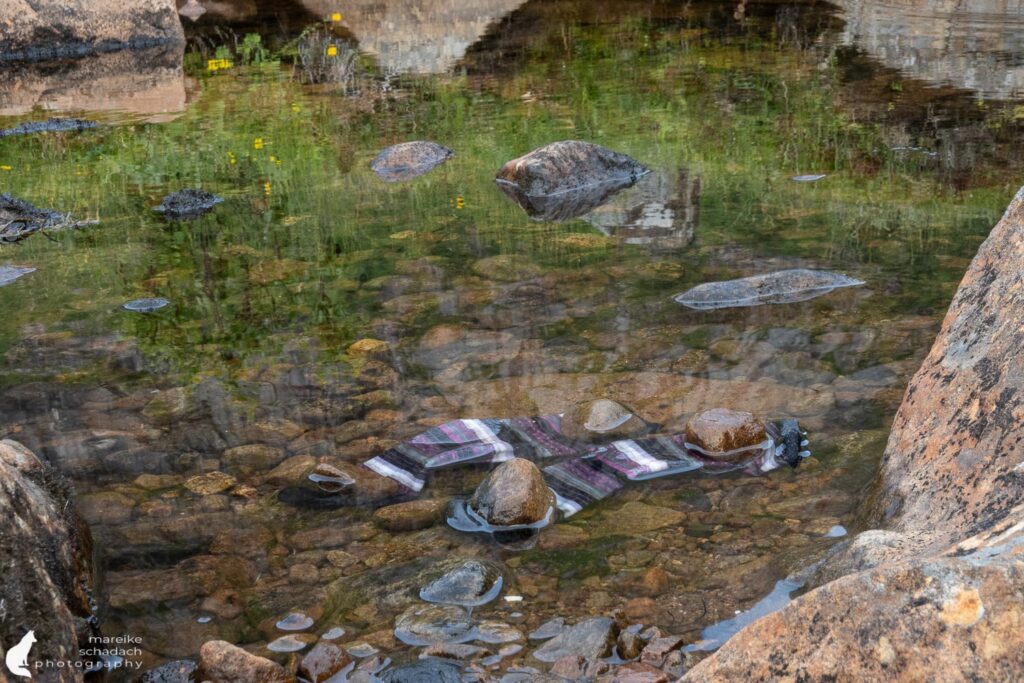
Unfamiliar Dogs
A separate topic: strange dogs, “trail dogs” and street dogs are better not to be petted...not like me here in Georgia. But these two trail dogs had already kept me company for three days, walking with me on my day trips and sleeping next to the tent...so they were almost mine...;-) Nevertheless, they could have had fleas or whatever. It doesn't always have to be dog bites.
If the dogs belong to someone and there is an owner nearby, ask beforehand if you can stroke the dog. Also, check whether the dog wants this. Because not every dog wants to be petted.
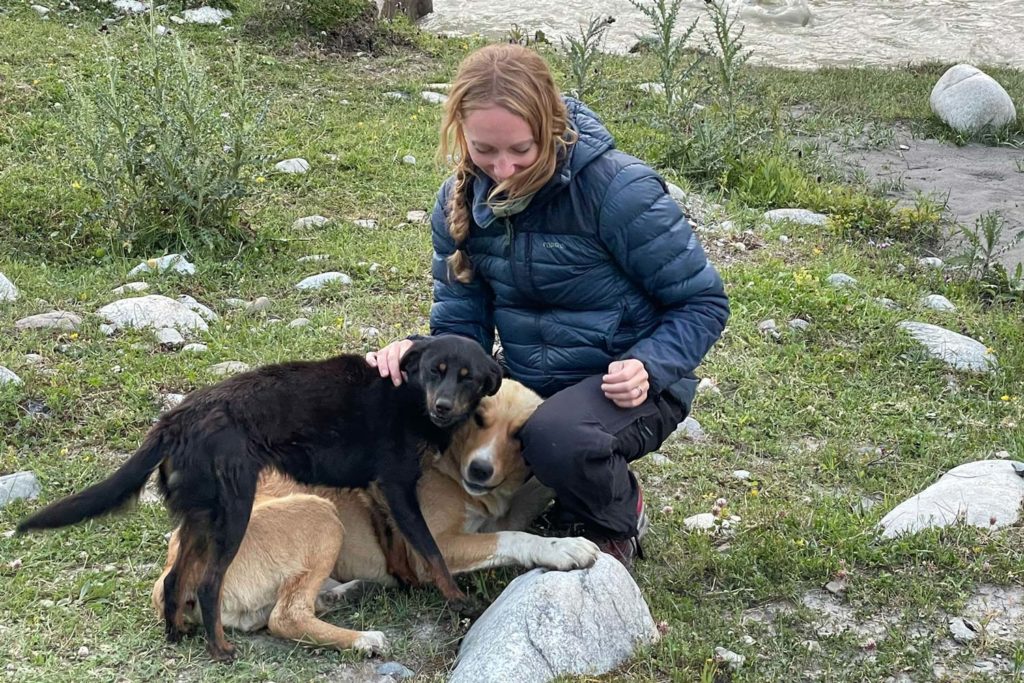
Risk of Infection in Group Accommodation
In hiking huts or on group treks, the close-knit community can increase the risk of colds or gastrointestinal infections. Good hygiene is therefore essential. This includes regular hand washing or the use of disinfectant gel, especially before eating. When staying overnight in huts, it is advisable to use your own hut sleeping bag and not to stay in crowded rooms if it is avoidable. Keep your distance from people who appear to have a cold. The same applies if you have a cold yourself. Communicate this, behave considerately, and wear a face mask (FFP2 mask).
Diet and Nutrition
Unfamiliar food, especially in foreign food cultures, can put a strain on the stomach. Caution is advised with raw food or unfiltered water to avoid infection. In many places in Asia or Central/South America, the motto is: “Cook it, boil it, peel it, or leave it”. So be careful with anything that is not cooked, freshly peeled or fried.
Finding berries or mushrooms along the way? Only eat them if you are sure they are edible.

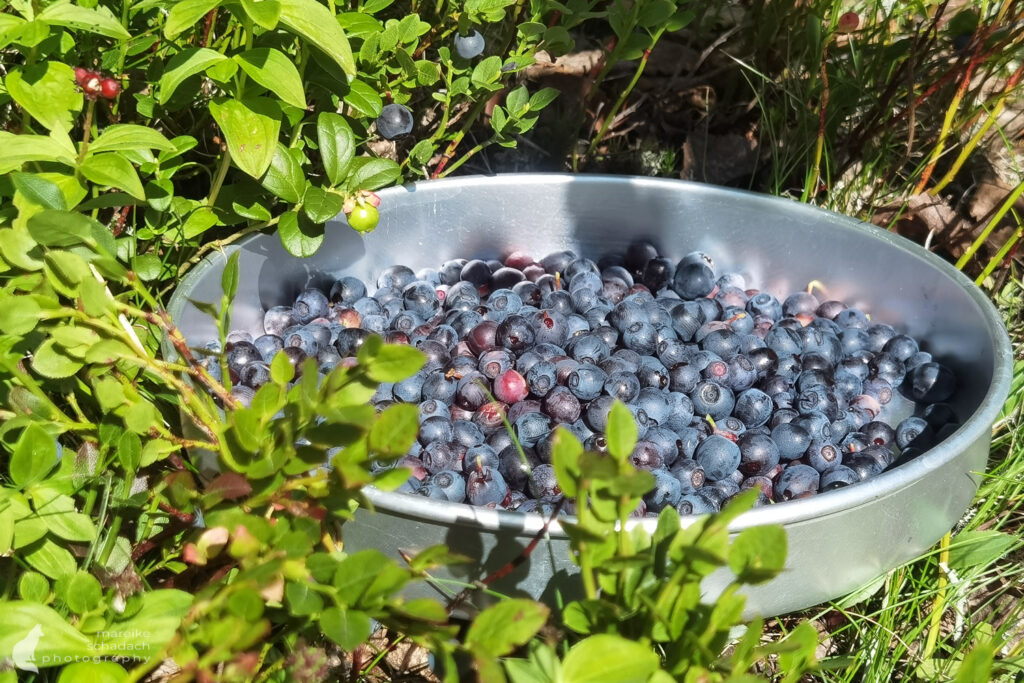
First Measures on the Trail
Common Cold
Despite all precautionary measures, health problems can occur along the way. One of the most common complaints on trekking tours is the common cold. The combination of physical exertion, changing temperatures, and a possibly weakened immune system makes the body susceptible to infections. When the first symptoms appear, it's time to shift down a gear. Even if you are still able to move around, it is by no means healthy. Spread colds drag on, coughs take hold, and, in the worst case, heart muscle inflammation can occur.
If possible, find a place where you can stay for a few days or leave your tent pitched. Get plenty of rest, keep warm, and, above all, protect your traveling companions.
- Rest and get plenty of sleep
- Warmth (clothing, hot water bottle), fresh air (regular ventilation), sun on your face
- Protect your fellow travelers: Keep your distance, separate beds or rooms (insulation); wash/disinfect hands; keep garbage with used handkerchiefs well closed and empty more often
- Vitamins, honey, ginger, garlic and invigorating food
- Drink a lot - preferably warm teas such as ginger or camomile tea
- Inhale (camomile, sage or fennel tea)
- Nasal rinsing with salt water
- Medication from your first-aid kit if necessary
TIP: Prepare a turmeric, pepper, lemon, and ginger oil mix. The ingredients have an anti-inflammatory and immune-boosting effect and reinforce each other.
Are you healthy again? That's great. Then take it easy and don't overdo it 😉 Maybe an alternative program with a rental car, a boat tour or a visit to a museum isn't bad either.
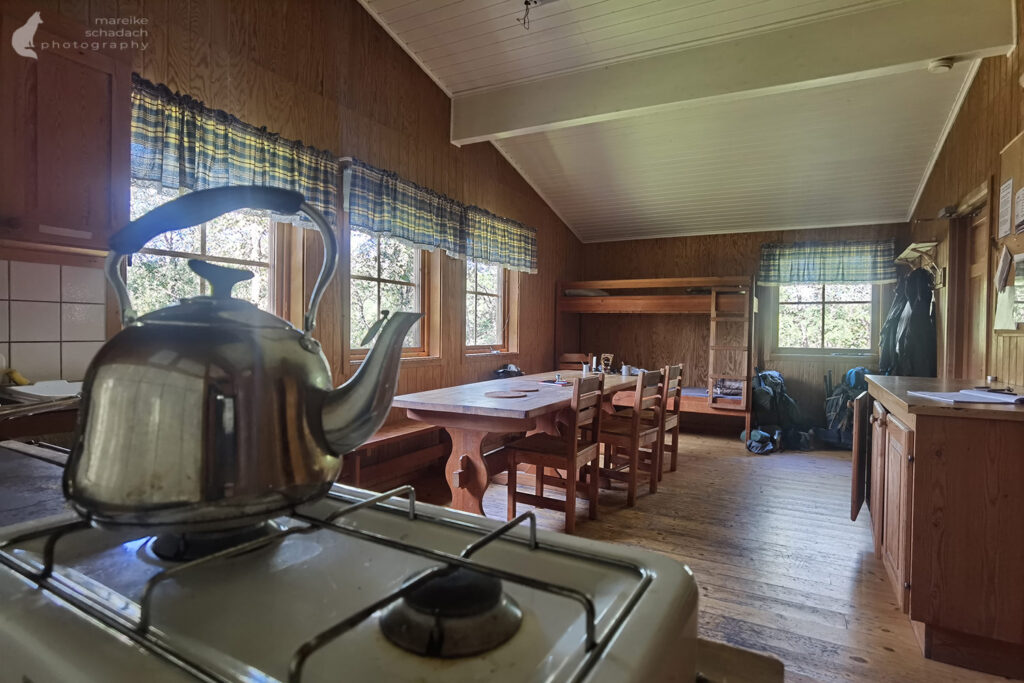
Gastrointestinal Complaints
Gastrointestinal complaints are also a common challenge on trekking tours. Unfamiliar food, contaminated water or stress can cause the stomach to rebel. A tried and tested home remedy is cola and black tea with a pinch of salt and sugar, which has a calming effect on the stomach. Grated apples, herbal teas, or a light broth can also help to stabilize the stomach. If you have diarrhea, it is important to consume sufficient electrolytes to avoid dehydration. Also, if you vomit until your stomach is completely empty and beyond, you need to drink plenty to prevent dehydration...even if it doesn't stay in for long.
In the summer of 2023, I heard that some huts in northern Sweden were closed due to an increase in gastrointestinal infections. It was suspected that hikers had not used the plum toilets and had done their business in the surrounding area...unfortunately too close to the drinking water source. Do it better! You can read how to shit in nature properly in my article Shit happens! A little guide to doing big business in nature.
Mosquito Bites
Home remedies such as cooling with ice or moist compresses, placing onions or lemon on the bite site or applying aloe vera can help with the itching caused by mosquito bites. Vinegar water, honey or toothpaste with menthol is also said to help. Always remember: scratching makes the itching worse and can lead to infections.
Herpes on the Lips
Cold sores have various causes. I occasionally get herpes when I drink from inadequately cleaned cups or glasses. In group accommodation with communal kitchens, I therefore use my own cup for drinking if possible. Honey, which I apply to cold sores, has proven to be a good home remedy for me. Zinc creams or ginger, which you gently press onto the blisters, are also said to help. Cooling helps against swelling and relieves pain.
Sunstroke and Heatstroke
Sunstroke is caused by prolonged exposure to direct sunlight on the head and neck. Symptoms include headaches, nausea, dizziness, and possibly even unconsciousness. The best prevention is to wear a hat or cap and stay in the shade whenever possible. If sunstroke does occur, the person affected should be moved into the shade, their head and neck cooled with wet towels, and plenty of fluids administered.
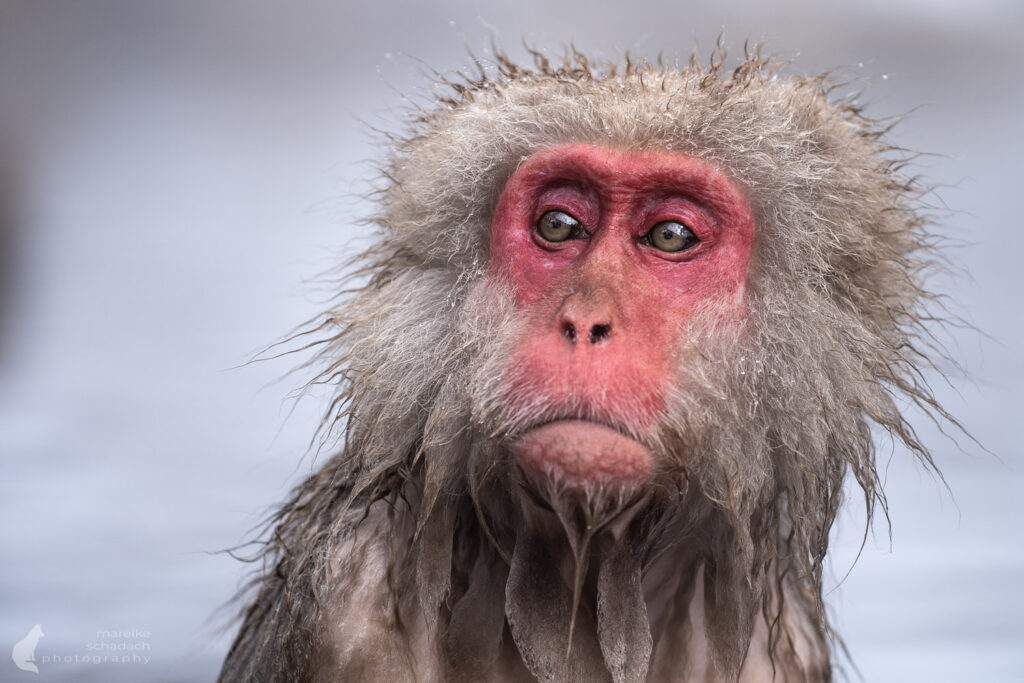
During my trekking tour on the Kungsleden in July 2024, I saw many people walking in full Goretex gear, including gloves, mosquito net and hood. It was warm and I was already sweating in my shorts and T-shirt. Some time later, I heard about a hiker who collapsed with heatstroke. Prolonged heat and physical overexertion in summer temperatures can lead to heatstroke, which can even be life-threatening...When was your last first aid course?
Sunburn
Sunburn can also be a serious problem on trekking tours. You can easily get sunburn on tours on the water, in the snow or at high altitudes. Regularly applying sun cream with a high sun protection factor, wearing protective clothing and avoiding the direct midday sun are essential. Once the skin has been burnt, aloe vera gel or curd compresses can help to cool and regenerate it. If nothing else is available, cool water will also help.
Blisters on the Feet
Here too, prevention is better than suffering afterwards. Wear suitable, well-worn boots and socks. Keep your feet dry. Tap or pad pressure points at the first noticeable irritation. Do not pierce water-filled blisters, as the skin over them protects you from infection. If the blister has already burst and the raw flesh is visible, your tour is unfortunately over. There is a risk of inflammation, which always carries the risk of sepsis. A detailed article on first aid for blisters can be found on the Guide Academy website.
TIP: Take a pair of light shoes with you for the camp so that your feet can relax.

Mycosis of the Feet
Prolonged moisture on the feet can lead to athlete's foot. I caught it while paddling in Indonesia because my feet were constantly damp and warm... Of course, I didn't have anything with me. I treated myself with wound disinfectant spray, foot baths in black tea, and garlic rubbed between my toes. Don't forget your fellow travelers: athlete's foot is contagious, so don't walk barefoot in communal areas/showers. This is also a good way to prevent infection in showers when you are out and about.
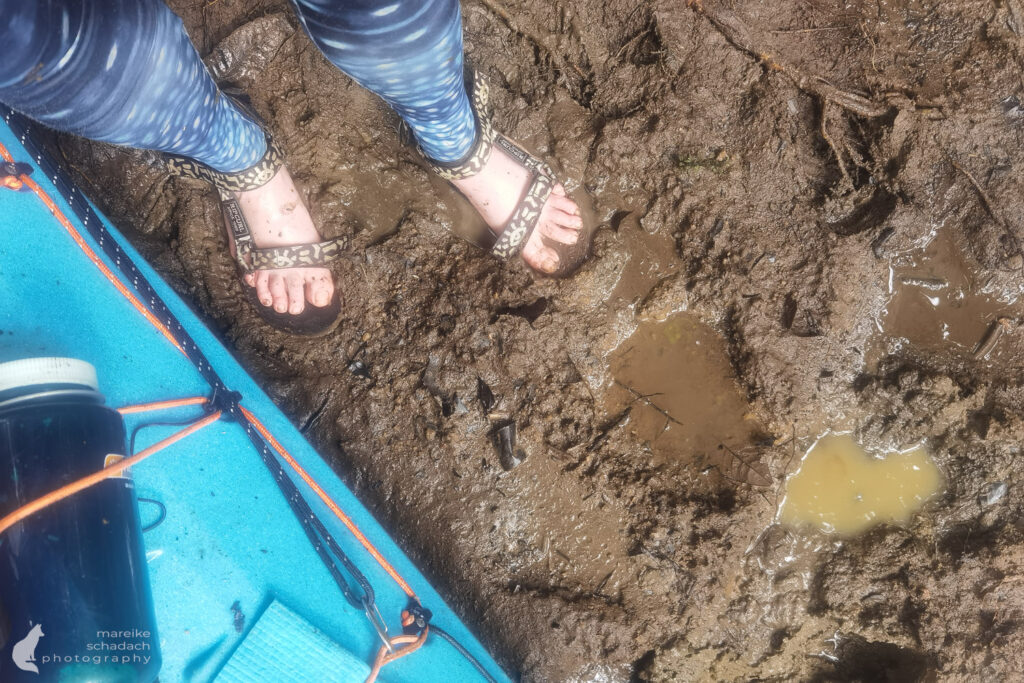
Altitude Sickness
Many trekking tours take hikers into the mountains. The first symptoms of altitude sickness can occur at altitudes of 2000 meters or more in people who are not used to the altitude. The body cannot adapt sufficiently to the lower oxygen content. Symptoms include headaches, nausea, dizziness and shortness of breath. It is essential to adapt slowly to the altitude, drink enough and take breaks when climbing. At the first signs of altitude sickness, you should descend immediately to avoid more serious consequences. More information on symptoms and how to prevent them can be found here at DAV.

Remedies from Nature
Our nature is full of interesting things. Many of them can help us with minor aches and pains along the way. The only catch is that you first have to know the regional plants with the respective active ingredients, you have to know how to use them and then you also have to be there at the right time of year. A topic that would go beyond the scope of this article. But maybe I've just made you curious. Then you can get smarter with the help of these books (affiliate links):
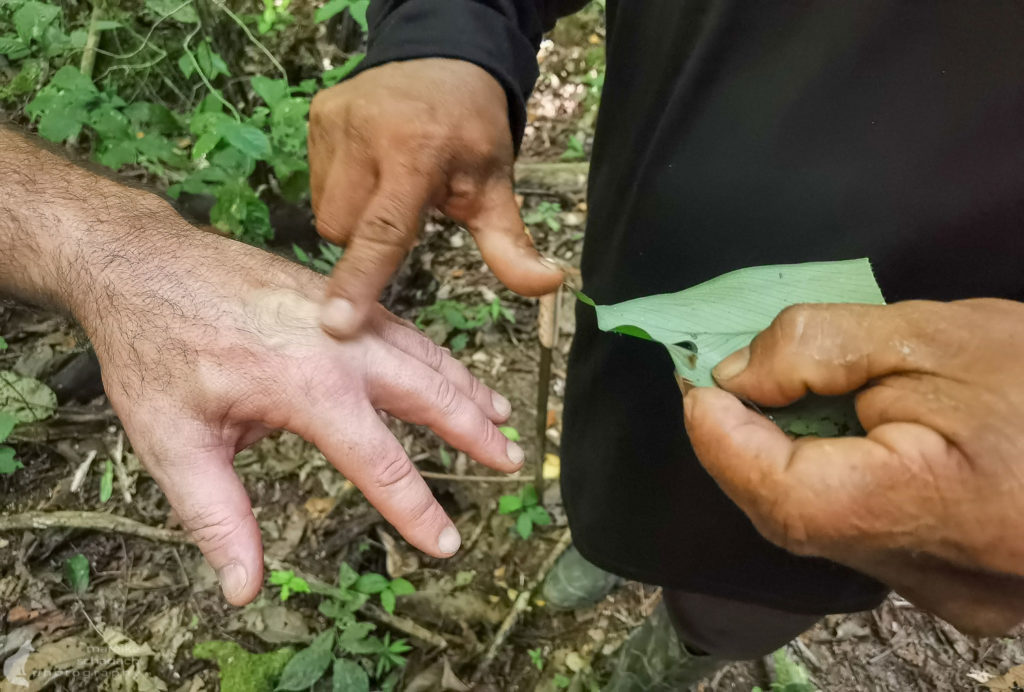
Rest Days and off to the Doctor
If an illness is more serious or lasts for several days, it is advisable not only to take one or more rest days but also - if possible - to seek medical advice. Your own health should always take priority over continuing your hike.
The more severe the infection, the longer you need to take a break. Even mild infection symptoms such as a sore throat, cold, or cough require the body to rest. If you have aching limbs or a fever, you need to take it easy and your hike is unfortunately over. Use the rest time in bed and think about an alternative program for the following days.

Conclusion: Stay healthy while trekking
Staying healthy on a trekking tour requires well-thought-out preparation, prudent behavior along the way, and the knowledge of simple home remedies for minor ailments. If you prepare well, know your limits, and take care of your body, you can enjoy an unforgettable tour and stay fit and healthy in the wilderness.
Book recommendations for Household Remedies
Would you like to know more about home remedies that might help you to stay or become healthy on your trekking tour? Then I can recommend these books*.
You can order the books with a click on the pictures at Amazon. If you buy a product via an affiliate link, I get a small commission and you help me to keep filling Fernweh-Motive with interesting articles. The product will not be more expensive for you and you do me a huge favor.
Want to know when there are new articles on my blog? Then follow me on Facebook, Pinterest or Instagram. I am also very happy if you share my article with your friends.
Recommendations for further Reading
Do you love long hikes as much as I do? Then you might also be interested in my articles about the Laugavegur in Iceland or about the The 9 most beautiful Hikes on the Isle of Skye.






